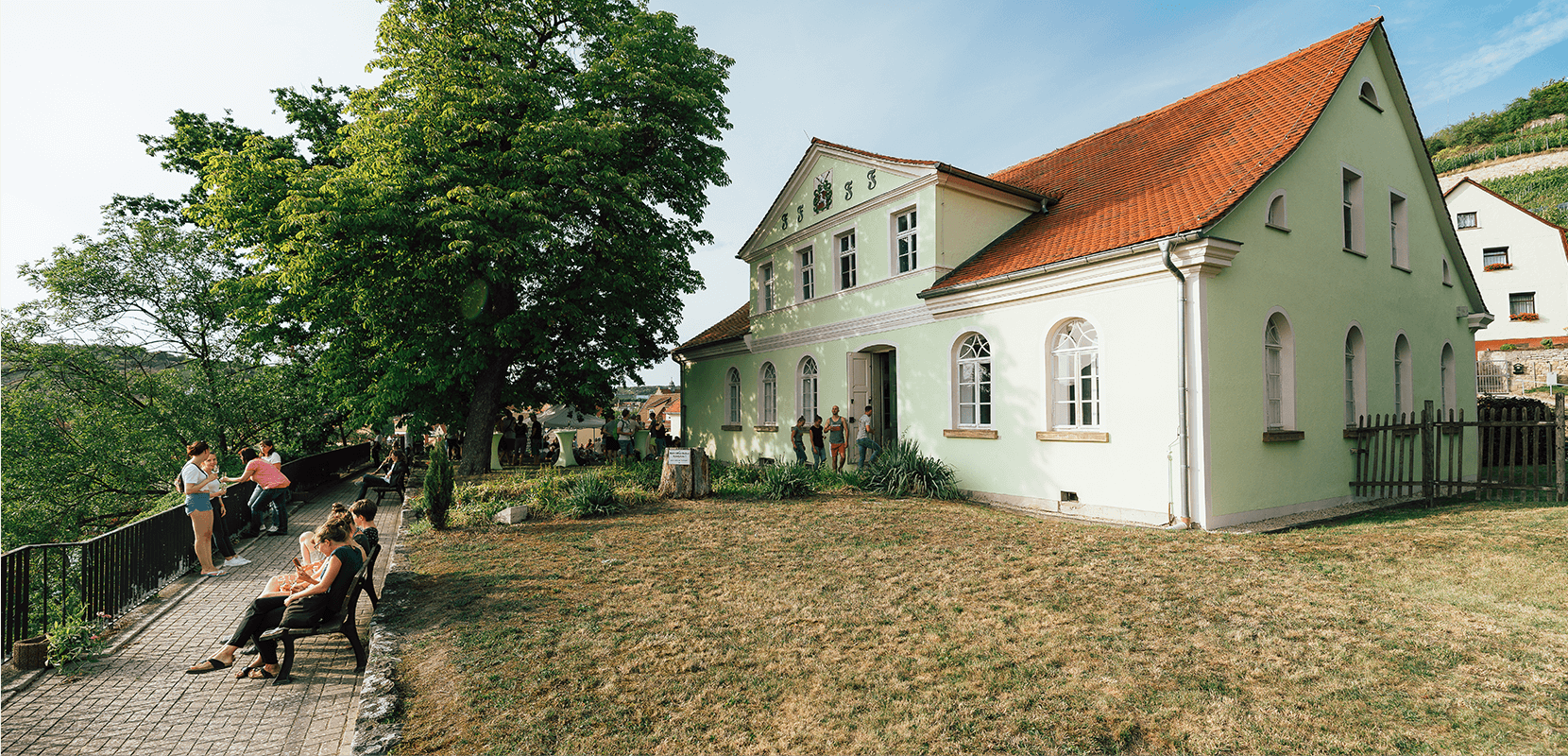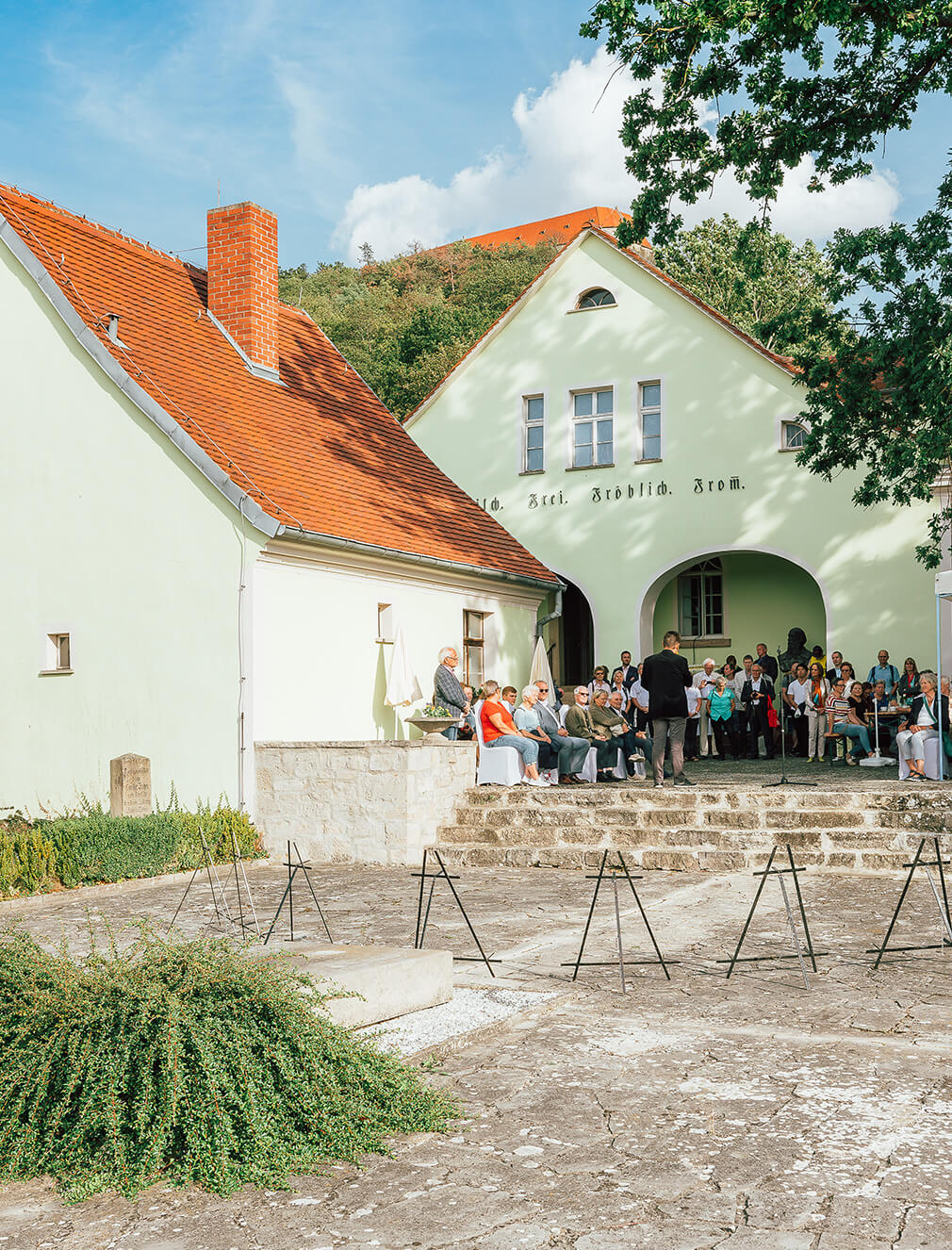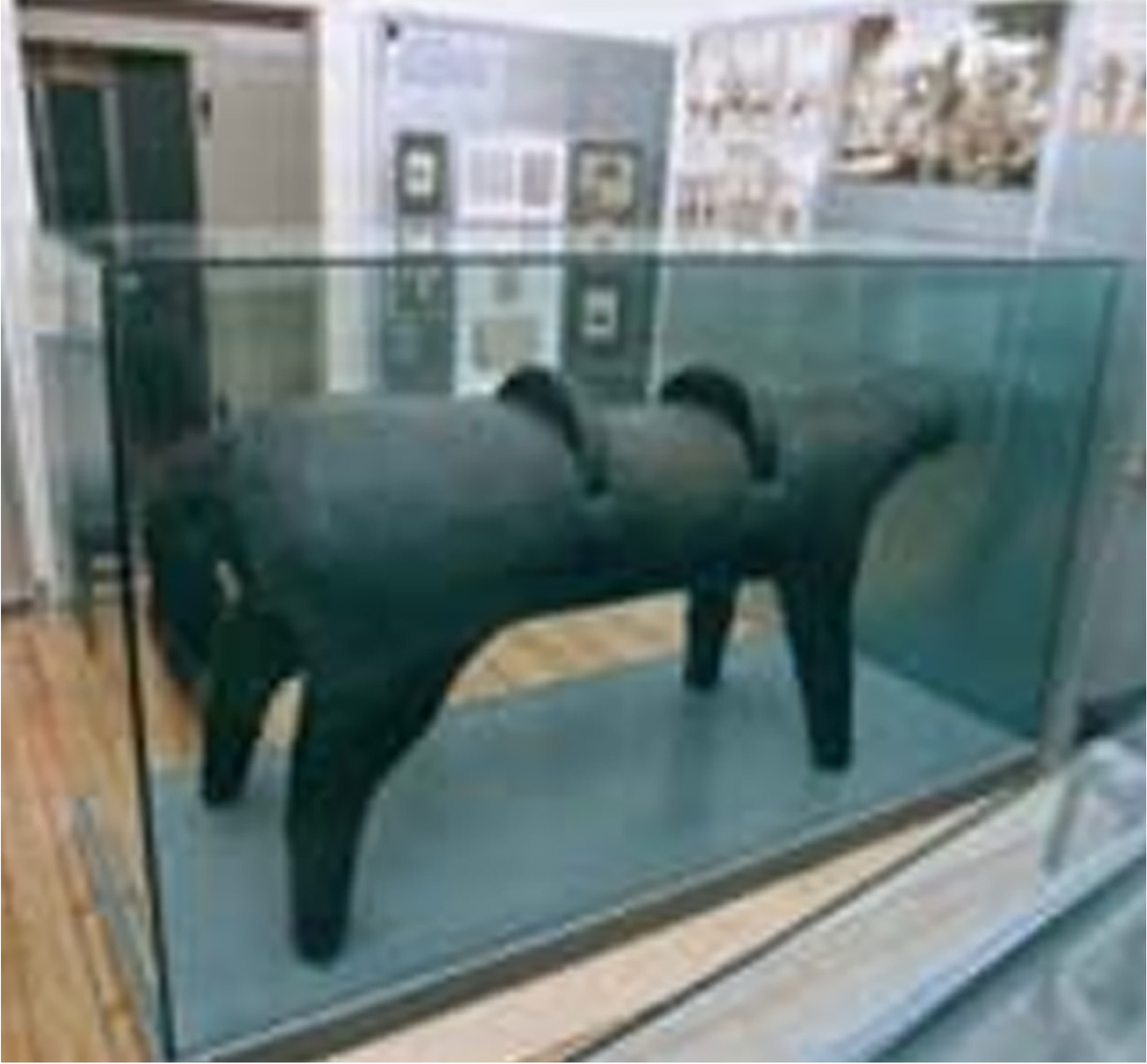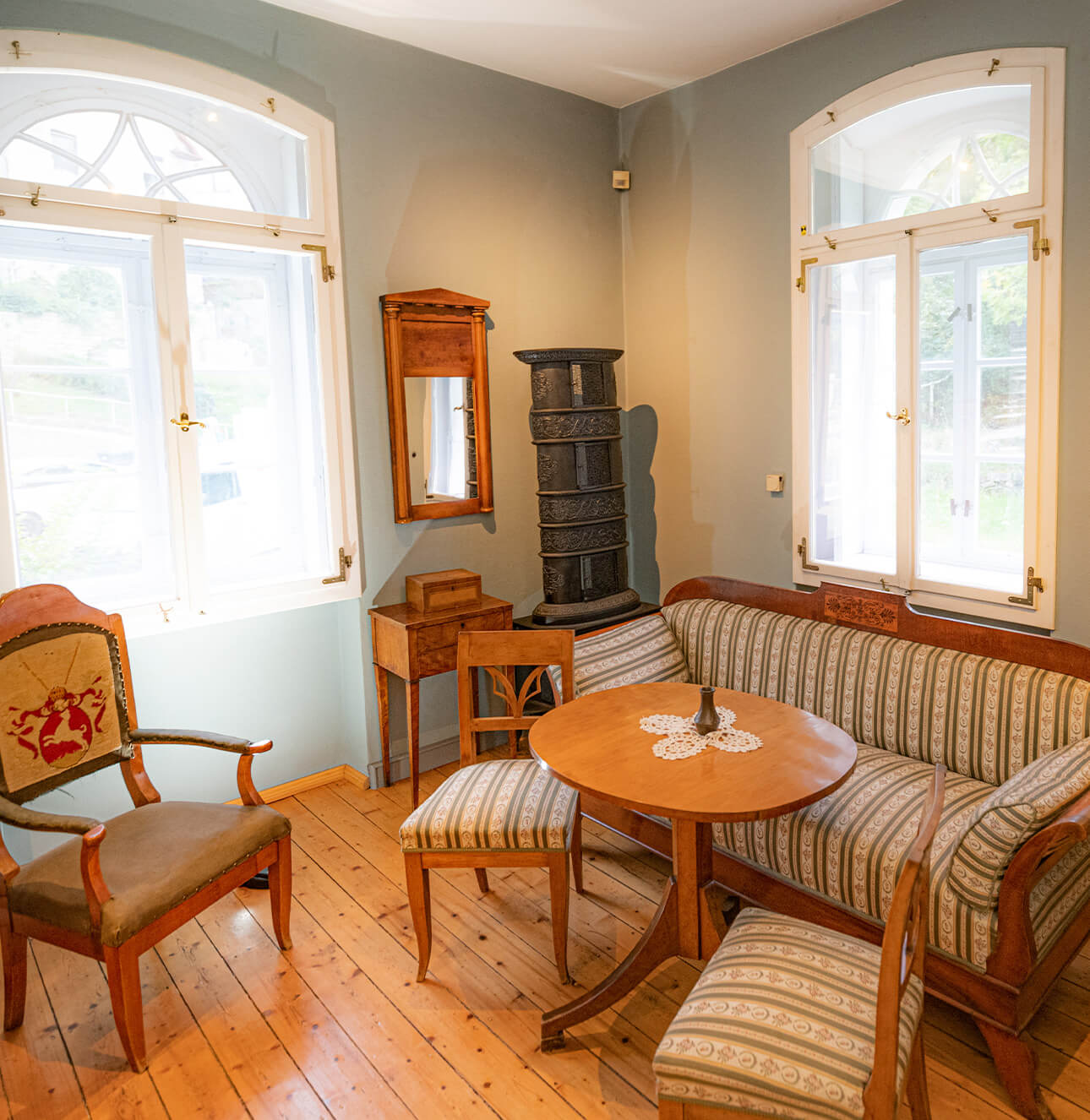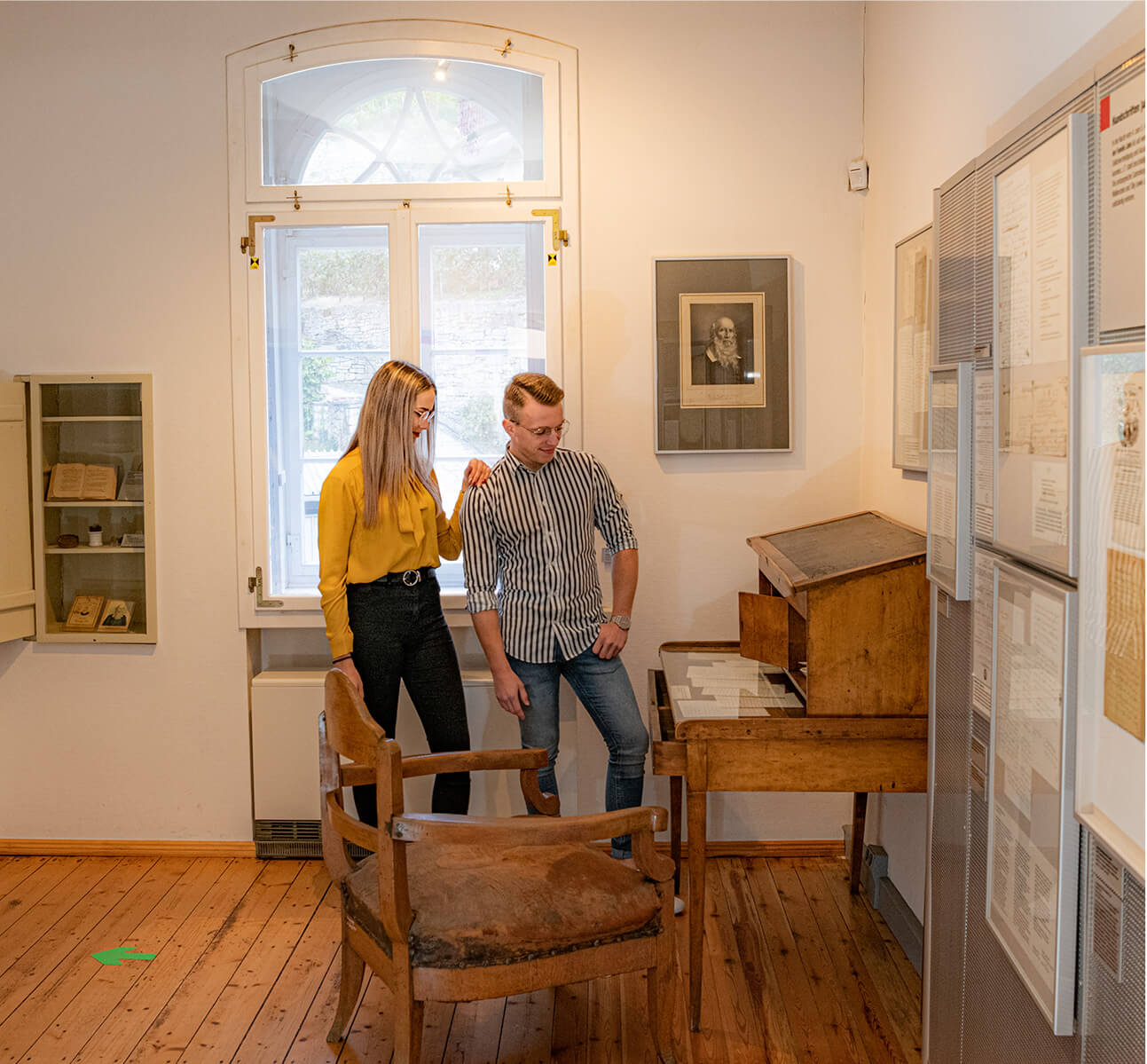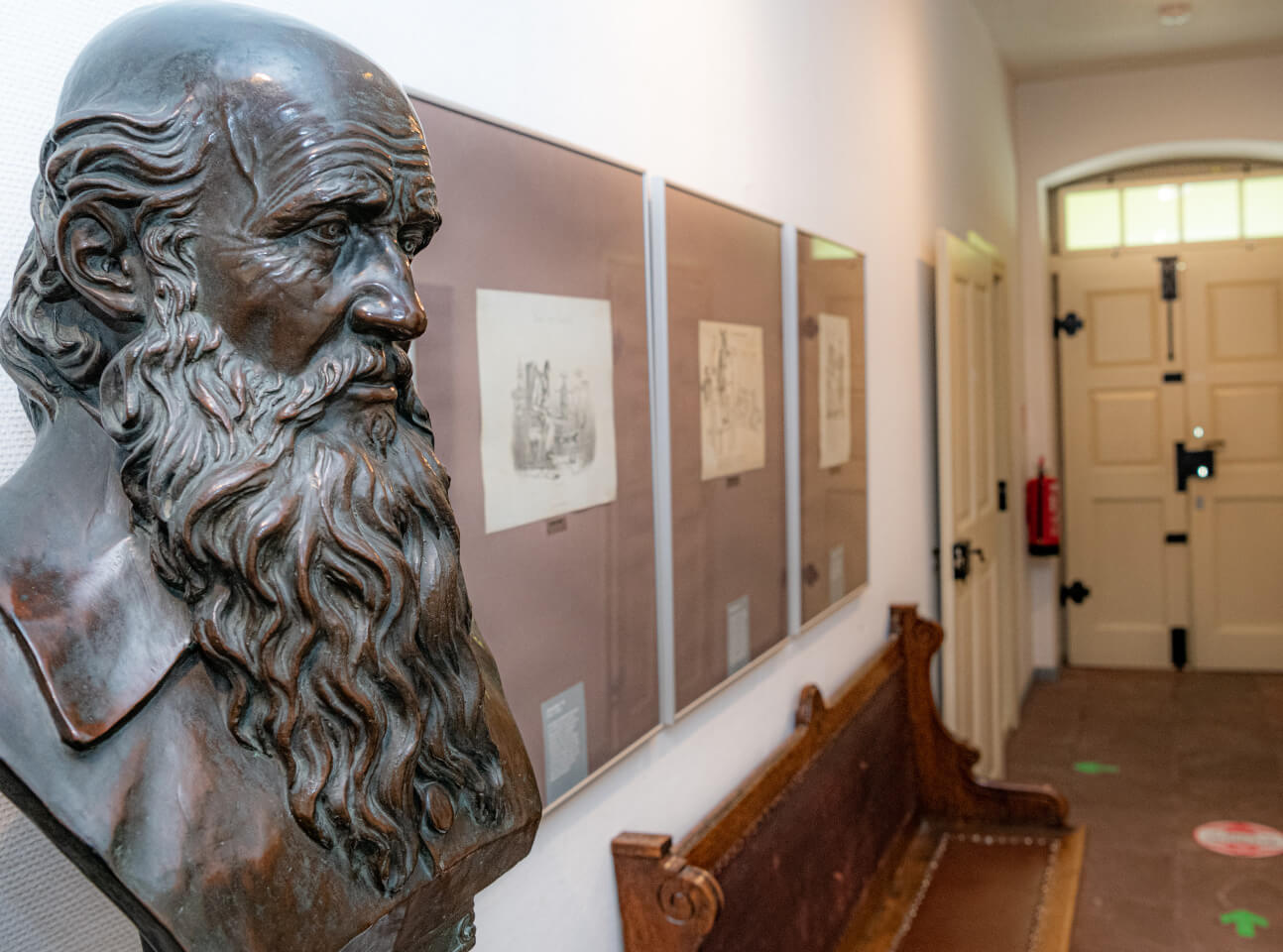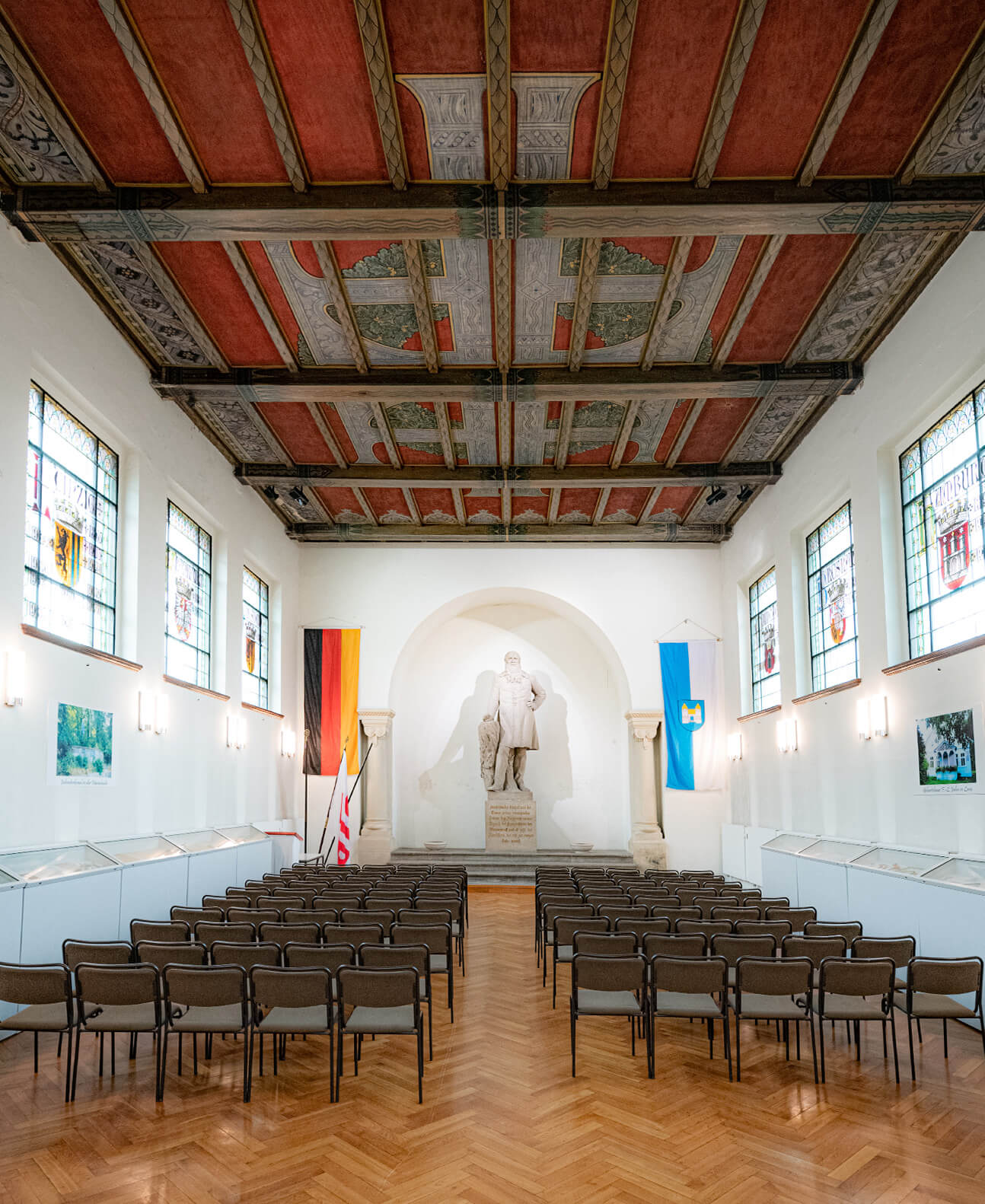Permanent exhibitionPermanent exhibition
The house, built in 1838/39, today houses
the Friedrich-Ludwig-Jahn-Museum
1TP3Lifeandwork
The permanent exhibition on the ground floor of the residential building provides a comprehensive insight into the life and work of the "father of gymnastics" Friedrich Ludwig Jahn, who is regarded as a thoroughly controversial figure in 19th century German history. All political systems of the late 19th and 20th centuries have rubbed up against this figure and used him as a projection screen. It stands symbolically for the "biography of the Germans" and, with its extraordinarily differentiated reception, continues to have an effect into the here and now of our society, polarizing in rejection and veneration. Out of its democratic self-image, the museum also cultivates a democratic approach to different opinions.
On the tour, visitors can explore the four thematic complexes of "Creator of German Gymnastics," "Personal Life and Family," "Publicist and Patriot," and "Reformer - Revolutionary? Deutschtümler - German?" Jahn as a person in his time and the prevailing social conditions, also with his character peculiarities and his time-bound views and expressions. This view of the "whole Jahn" with all his merits, achievements and goals, but also with all his human weaknesses, failures, disappointments and conflicts runs through all the exhibition complexes.
A completely new permanent exhibition is to be implemented by 2023, which will focus not only on the life and work of the artist but also on the history of his reception from 1852 to the present day.
Creator of German Gymnastics
Personal life and family
Journalist and patriot
Reformer - Revolutionary? Deutschtümler - German?
In 1999 the house was renovated and the current permanent exhibition "Friedrich Ludwig Jahn: Life and Work" was opened in the rooms on the ground floor.
Friedrich Ludwig JahnFriedrich Ludwig Jahn:
Creator of German Gymnastics
The first complex is dedicated to Jahn's life's work: the development of a modern civic physical education and its design as a public matter.
Jahn's book is of particular importance in the representation of gymnastics. "The German Art of Gymnastics"which he published together with Eiselen in 1816. Besides Ernst Bernhard Wilhelm Eiselen (1792-1846), Karl Friedrich Friesen (1784-1814) was Jahn's most important comrade-in-arms in the development of gymnastics.
An eye-catcher of special historical importance is the "Schwingel" (gymnastics horse), which the Berlin gymnasts gave to their "gymnastics father" for Christmas 1812.
Living room in Jahn's time in Biedermeier style
FamilyFriedrich Ludwig Jahn:
Personal life and family
The second complex depicts Jahn's private life from his Childhood until his death. Among other things, the long Engagement with his first wife, the six years of dungeon and Fortress Prison and the following A new start in exile in Freyburg illustrated by various documents and objects from the personal possessions of Jahn and his family.
In addition to the four-square chess set, notebook, walking stick and tobacco pipe and pouch of the "gymnastics father", the oil painting by the painter Heine, for which Jahn himself is said to have sat as a model, is particularly impressive.
Journalist and patriotFriedrich Ludwig Jahn:
Journalist and patriot
Among other things, his two major works will be on display: "German Volksthum" (1810) and "The German Art of Gymnastics" (Jahn/Eiselen 1816), the latter in an expanded edition of 1847 that has become rare. With "Volksthum" Jahn occupies a worthy place among those progressive German reformers at the beginning of the 19th century whose works have been called national education plans.
The handwritten texts exhibited here are only a small selection from the museum's collection.
The manuscript on the Thirty Years' War, as well as the letter from his wife, with their fire damage, illustrate the tragic losses of books, letters and other manuscripts that Jahn had suffered in the fire of his apartment in 1838.
The "worry chair" standing in the study and the
Writing secretary belong to the preserved furniture
from Jahn's personal possession.
Friedrich Ludwig JahnReformer - Revolutionary?
Deutschtümler - German?
The fourth complex presents highlights of Friedrich Ludwig Jahn's political activity. A Jahn quote and the map of Central Europe at the end of the 18th century illustrate the experiences and political conditions gained in his childhood and youth as the starting point for his lifelong striving for a unified German nation state.
With his National Education Plan, the book "German Volksthum"his initiative to establish the secret German Federal, the establishment of the public gymnastics field on the Hasenheide and the spreading of gymnastics in Prussia and other German states, as well as with his activities for the founding of the Deutsche Original fraternity Jahn took on a variety of tasks aimed at realizing the idea of German unity.
The "Burschenschaftern" (fraternity members), most of whom were also gymnasts, held a meeting in the autumn of 1817. Wartburgfest aroused the distrust of the princes once and for all. The murder of the Russian councillor of state August von Kotzebue by the Burschenturner Karl Sand was the final cause for the "Demagogue persecutions", the arrest of F. L. Jahn and the "Gym lock".
The last topic in this complex is devoted to Jahn's activities as a member of the Frankfurt National Assembly in 1848/49.

